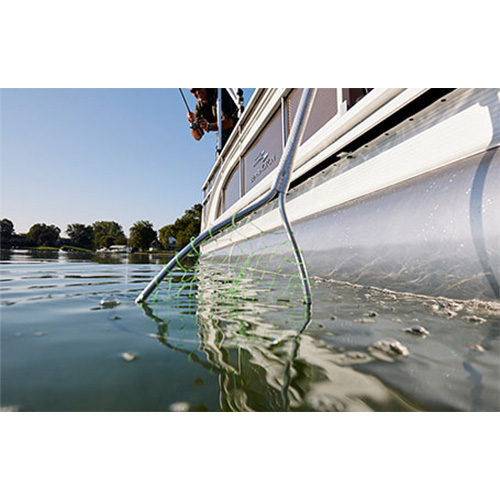
Choosing the Right Dock For Your Pontoon Boat
Those fortunate enough to own both a lake house and a pontoon boat need a dock to tie up to. The type of dock you install will depend upon your lake and your shoreline. Here are the basic choices.
Types of Docks
Stationary docks are secured permanently to the lake bottom. They may be supported by posts or by piles driven into the bottom, or on cribs, which are large timber cages full of rocks. If the lake is subject to high winds that create rough water, stationary docks are often the best choice.
Floating docks are generally preferred for deep water shorelines or where there are significant changes in the water level due to tides, seasonal differences in rainfall, or dam control. Like stationary docks, most floating docks are designed to stay in the water all year long. Some are held in place by piles, to which they are attached loosely and alongside of which they can float up and down. Others are secured by cables to the shoreline and/or to anchors buried in the lake bottom.
Wheeled or portable docks are removed from the water during the boating off-season. They are useful where the lake experiences heavy ice that could damage permanent docks. To be practical, the bottom has to be hard enough and smooth enough for the wheels to roll on without getting stuck, and the shoreline has to have a shallow enough slope so that the dock can be rolled up it (without the help of a bulldozer).
Boat lifts are used in conjunction with stationary docks. These devices, which use manual or electric winches or hydraulics, lift the boat out of the water, preventing the growth of algae, mussels and barnacles on the pontoons and protecting the boat from ice and from banging against the dock or pilings during high winds.
Some More Considerations for Pontoon Boat Docks
Height: The decking should be 13 to 18 inches above the water surface to make getting on and off the boat comfortable and safe.
Securing: For stationary docks on sandy lake bottoms, pound pipes into the bottom to hold the dock in place. If the lake bottom is clay or extremely rocky, a pile-driver may be necessary. A crib is another option for a rock bottom that doesn’t require a pile-driver.
Gangway: Most floating docks have a gangway that connects them to the shore. They usually have a hinge at the top end so the gangway can ride up and down with the lake level, and wheels at the bottom so that it rides smoothly over the deck of the floating portion.
Hardware: In a boating environment, plain steel will disintegrate almost before your eyes. All metal fittings and fasteners must be stainless or hot-dipped galvanized steel. Cleats should be through-bolted through the deck to provide solid tie-offs for the boat.
Maintenance: Use anti-fouling paint to slow the growth of algae and other organisms that would attach themselves to the dock. Once a year, plan to hire a diver or go overboard yourself to scrape the growth from the dock’s underside.
Do you keep your Bennington on a dock? Post photos on our Facebook page and let us have a look.












